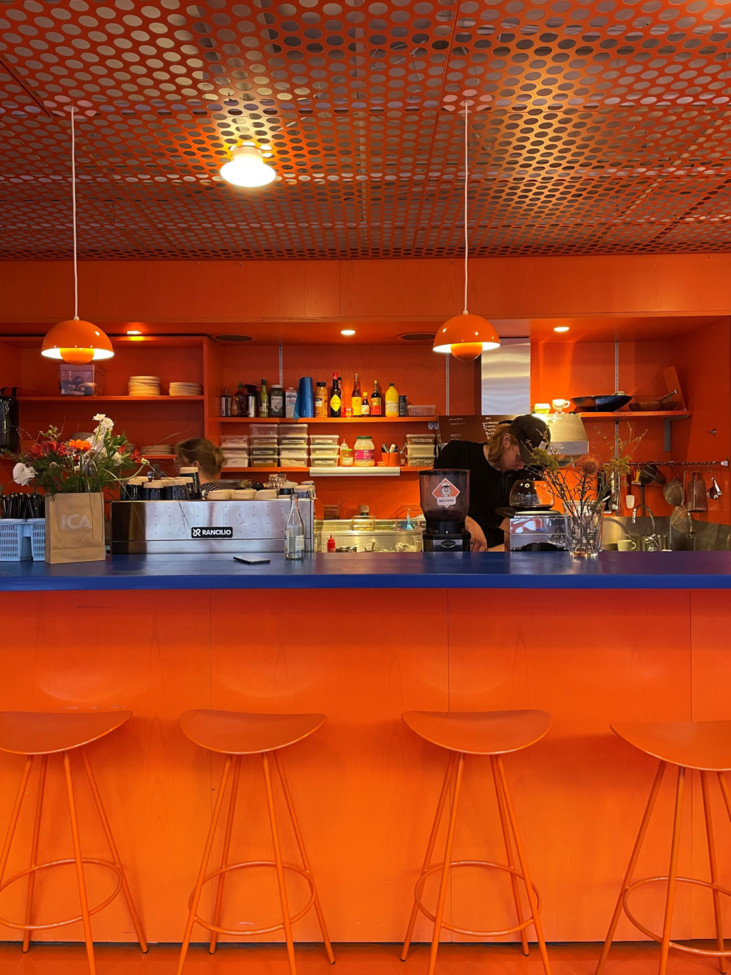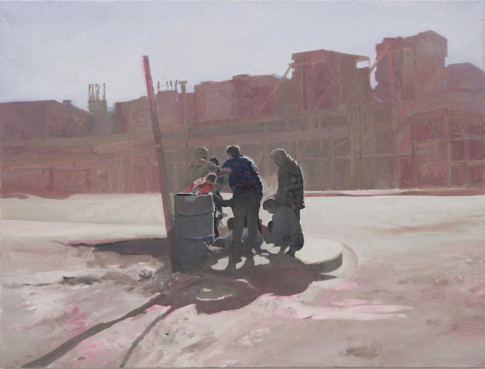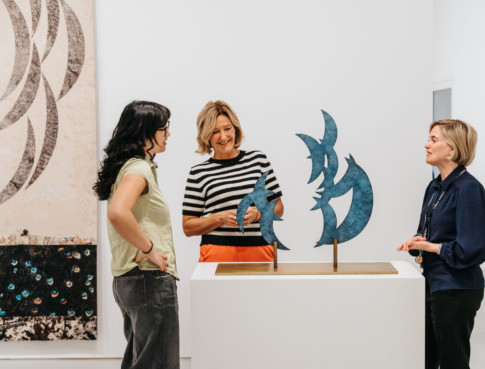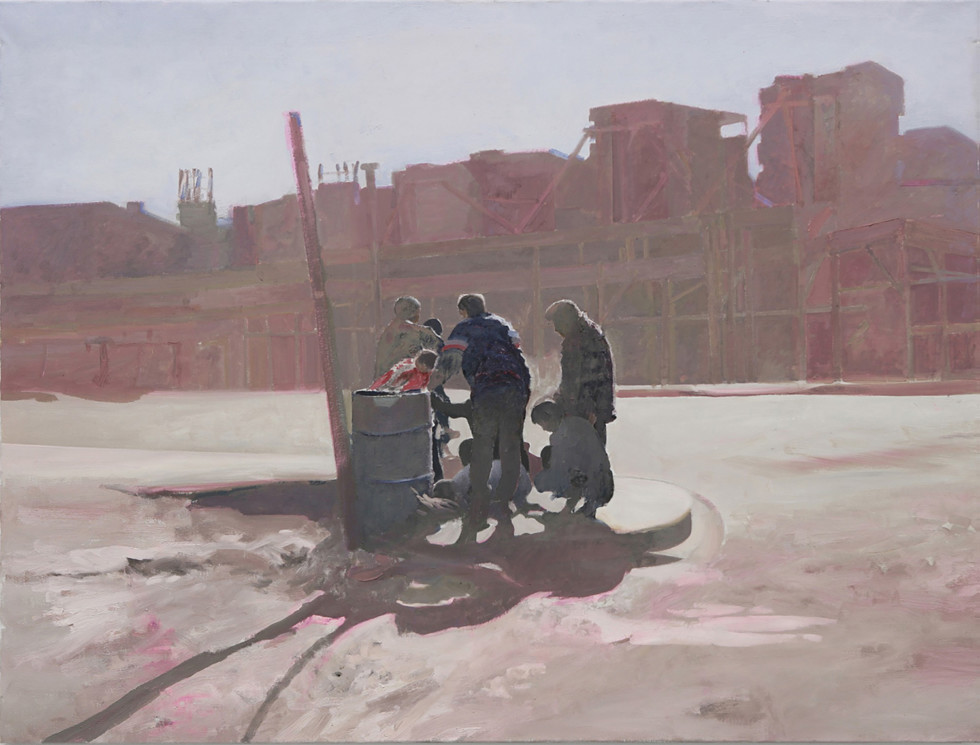
Edi Hila, Street Scene, From the series Threat, 2005 Courtesy Brian McCarthy & Daniel
Sager, NYC
On Edi HIla’s artistry
Paradoxical Realism
In 1991, Albania’s communist dictatorship falls — one of the world’s most closed and repressive regimes. Freed from the straitjacket of Socialist Realism, Edi Hila begins to depict society on his own terms.
He develops a “paradoxical realism” that, in a style marked by stillness and poetry, captures burgeoning enthusiasm and creativity, but also contradiction and fragility in the passage between two world orders — registering the transition’s moods, colours, scents, and architectural traces.
On a beach, bathers have set up their parasols between the dictatorship’s ruined bunkers and a stranded cargo ship that only recently carried migrants across the Mediterranean. A textile vendor has deftly transformed a heroic monument into part of the street market, while a makeshift fish stall has appeared amid exhaust fumes and concrete.
Everyday life is infused with absurd situations and wry ingenuity. At the same time, an undercurrent of unease persists — a latent violence, like an invisible blade.
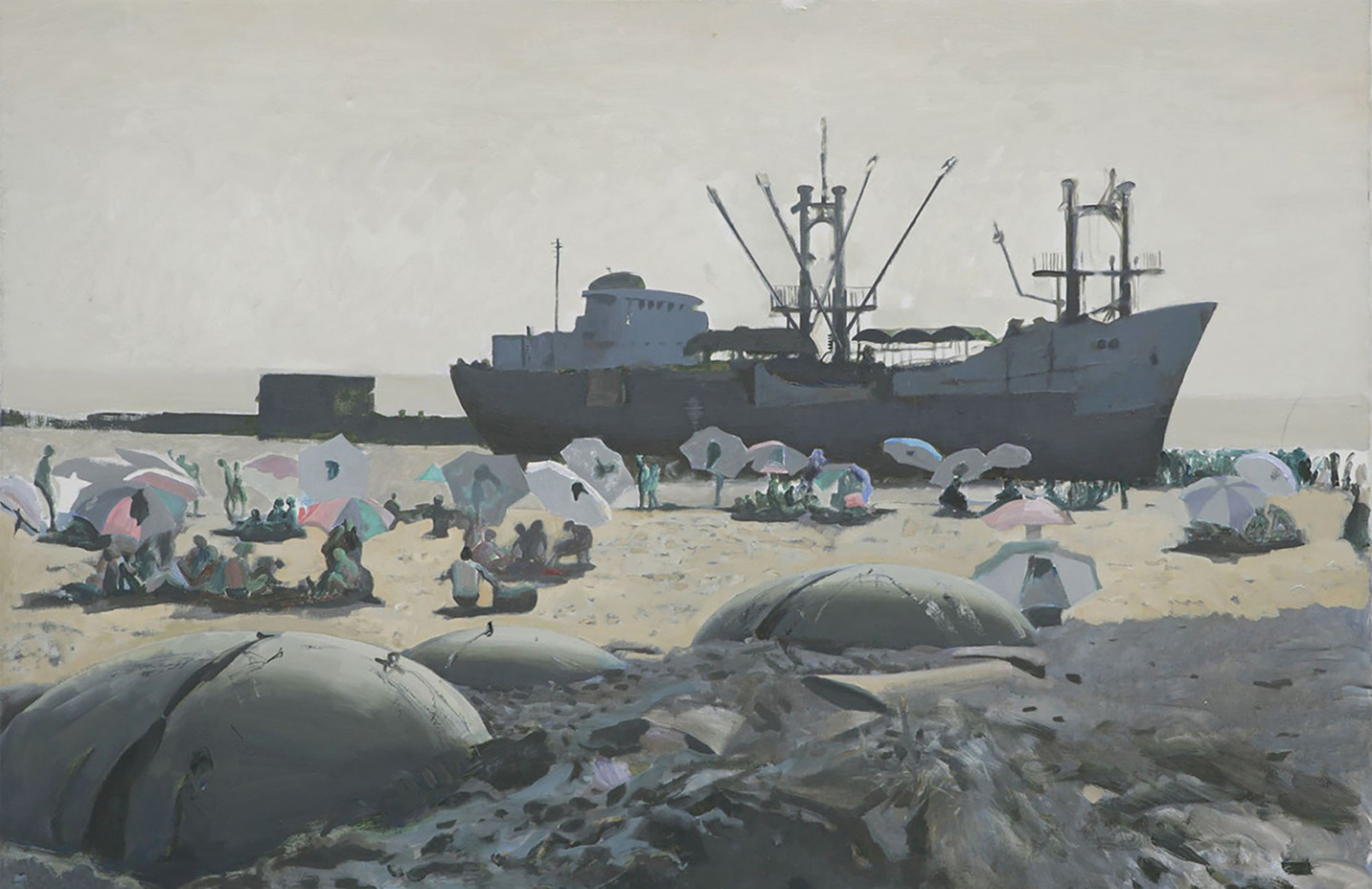
People of the Future
In the spring of 1997, post-communist Albania stood on the brink of collapse. Out of this chaos, Edi Hila created some of his most haunting works.
In the triptych “People of the Future”, a ship looms against a deepening blue sky – freighted with dreams of a better life.
The work is rooted in the so-called Otranto tragedy, when an Italian naval vessel rammed a boat carrying Albanian migrants. The boat capsized and most on board perished – among them children and infants.
In Hila’s condensed painterly language, hope intertwines with fear, anguish, and the merciless force of the military.
Hila also turns his gaze inward. In the series “Comfort”, he conjures the sensation of a world imploding – walls and floors giving way, existence dissolving into murky grey waters. In stark counterpoint to the promise of a better life, an existential unease emerges: the sense of losing oneself.
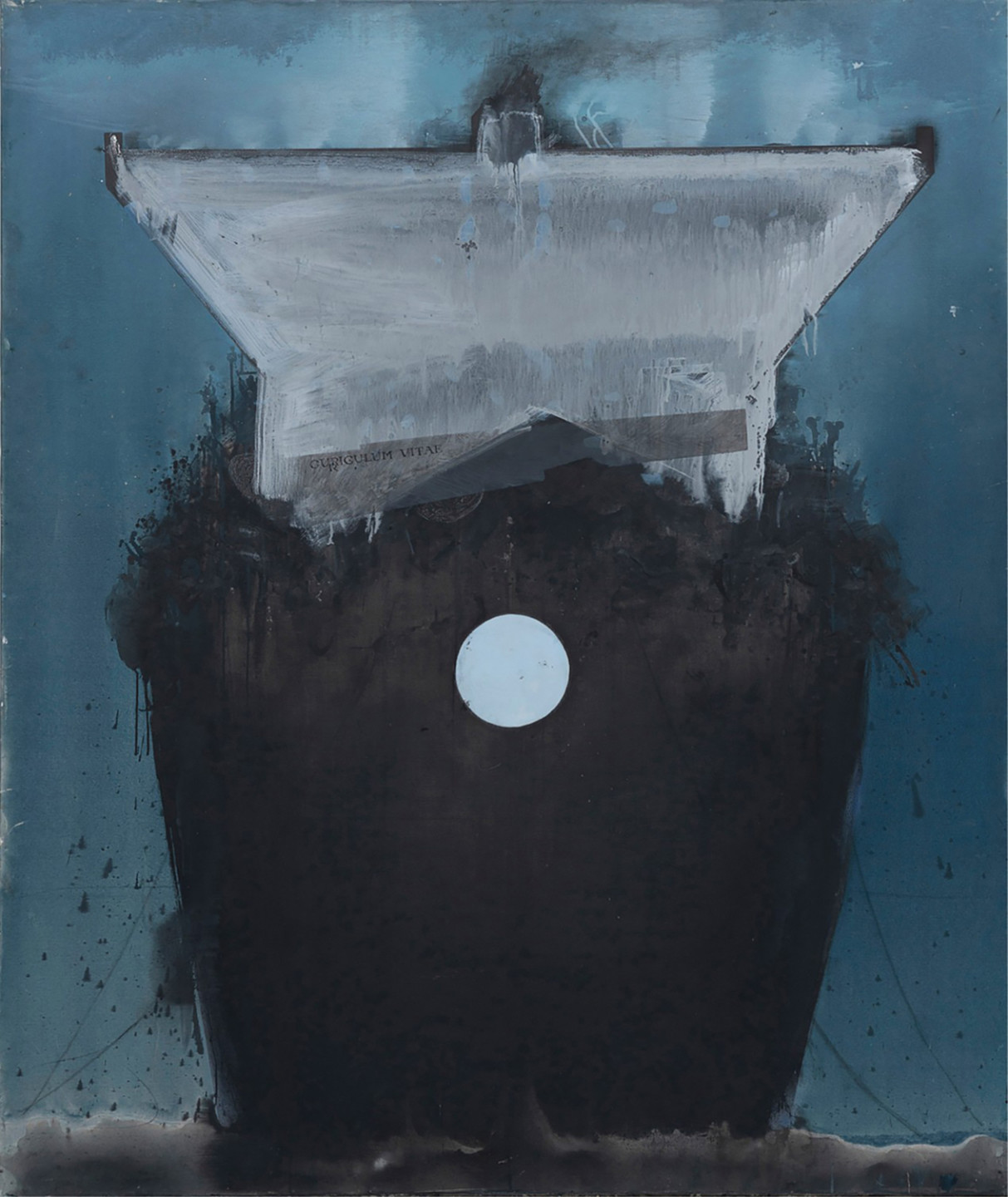
A Historical Retrospective
In the early 1970s, Edi Hila was prohibited from practicing as an artist and was compelled to work on a poultry farm, where he spent several years shouldering sacks of flour. The official reason was that his painting Planting of Trees (1971) was deemed not to conform to the doctrine of Socialist Realism. Since the farm was located in Tirana, Hila was able to continue living at home. In the evenings, he sketched memories from the working day – portraits of colleagues and their interactions.
Despite the harsh consequences, Hila recalls the painting with warmth: “I was newly in love with my future wife Joana – filled with the joy of life and of love. Those emotions permeate the canvas.”
The Penthouses of the Newly Affluent Class
By constructing homes atop existing apartment buildings, the newly affluent class asserts both its power and its distance. In the “Penthouse” series, Edi Hila captures this phenomenon. His towering, fantastical structures rise in isolation against the sky – like monuments to a new kind of being.
At the same time, the paintings resonate with historical echoes. In “Penthouse 4”, a kinship with the visual world of Giotto di Bondone—often regarded as a forefather of Renaissance painting—becomes apparent. The tower-like forms also evoke the Albanian kullë: tall stone houses that for centuries functioned as both dwellings and fortresses.
Here, the urban extravagance of the present meets the visual language of the Renaissance and the region’s tradition of walls and fortifications. The works open onto a psychology in which isolation, fear, and status are interwoven—and in which the Balkans’ conflict-ridden history continues to cast its shadows over the present.
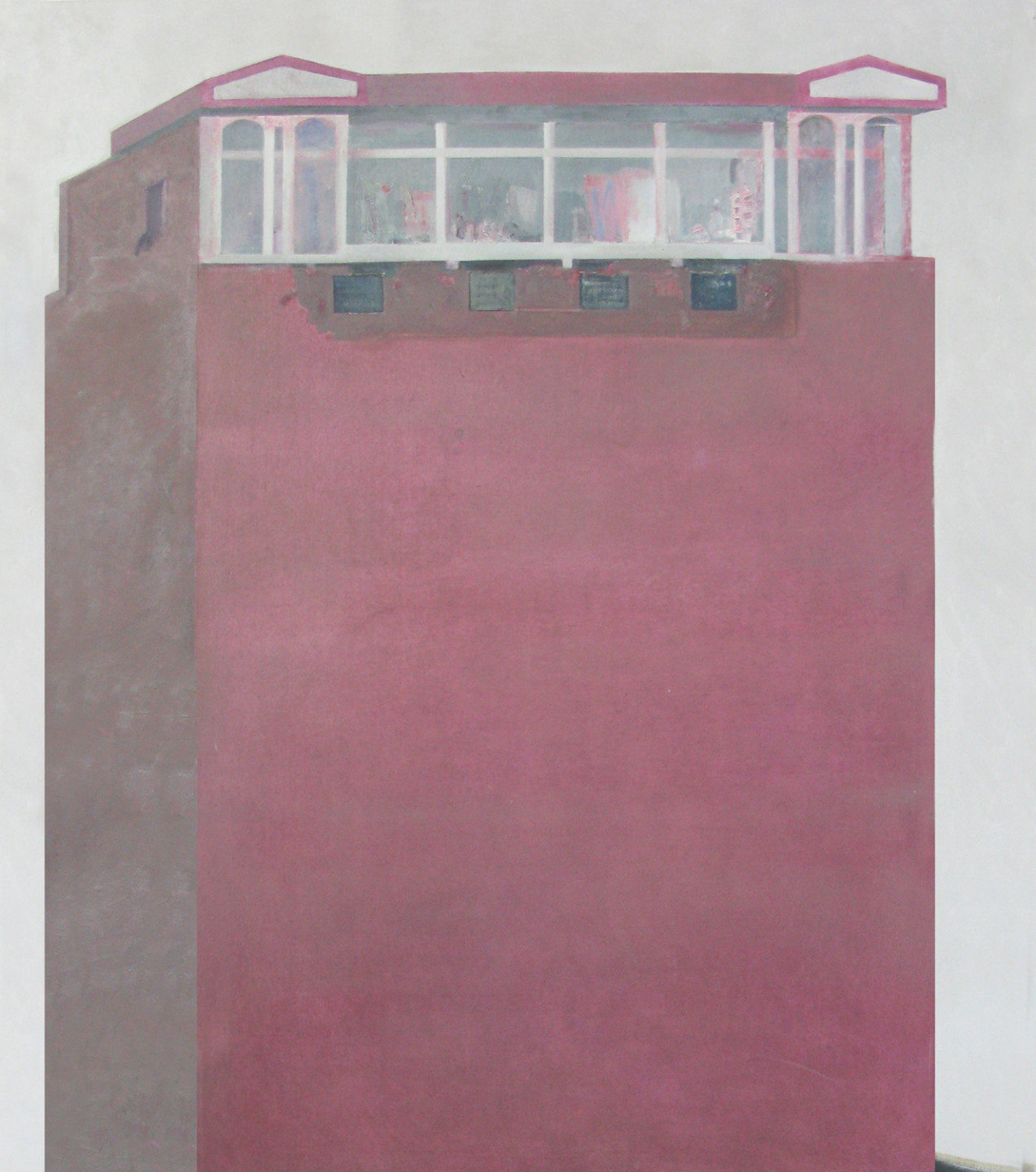
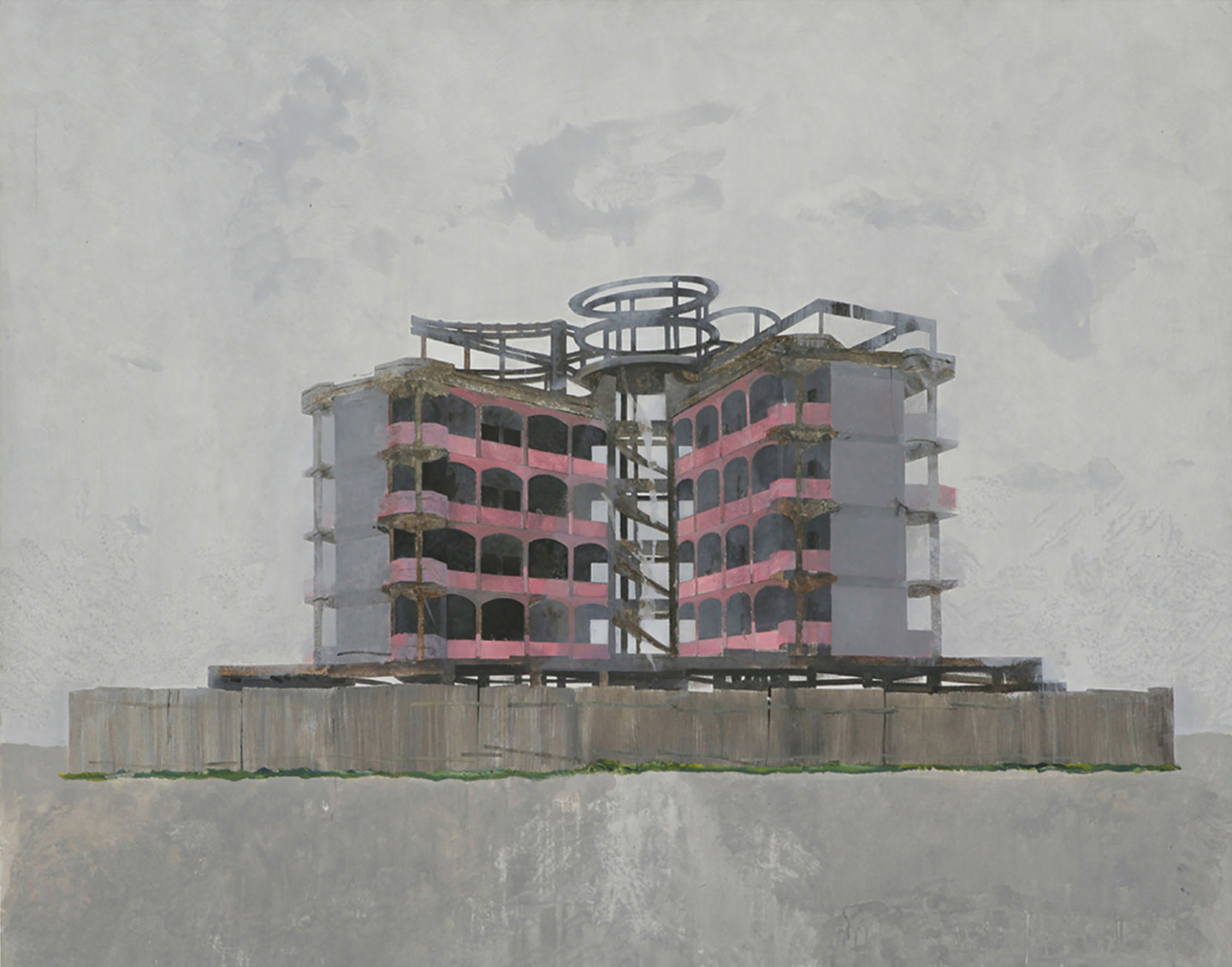
Gezim Qendro (1957–2018), the late art historian and former director of the National Gallery in Tirana, has described the architectural development in Albania’s transitional period as a “collective and spontaneous invasion of public space”.
He argued that Edi Hila, in a singular way, managed to capture this transformation:
“Although the attitude towards the subject is apparently detached and neutral, we feel that there is something strange going on in these empty, gloomy landscapes, forcing us to scrutinize them in order to understand this unease, this disturbing presence of something we cannot see.”
Martyrs of the Nation Boulevard
In a series of evocative paintings, Edi Hila focuses on Tirana’s grand avenue, Bulevardi Dëshmorët e Kombit — Martyrs of the Nation Boulevard. A historic stage for public life, it was shaped by totalitarian regimes and has served as a backdrop for conflicting struggles for freedom.
The façades’ fascist, rationalist aesthetic — including an abstracted rendering of Tirana’s university, completed in 1942 as the Casa del Fascio (House of Fascism) — traces back to the Italian occupation of Albania (1939–1943).
In Hila’s paintings, these structures appear closed and mute, as if guarding hidden truths. Through the dense atmosphere, they emerge as the true subjects — silent witnesses to the city’s history and its people.
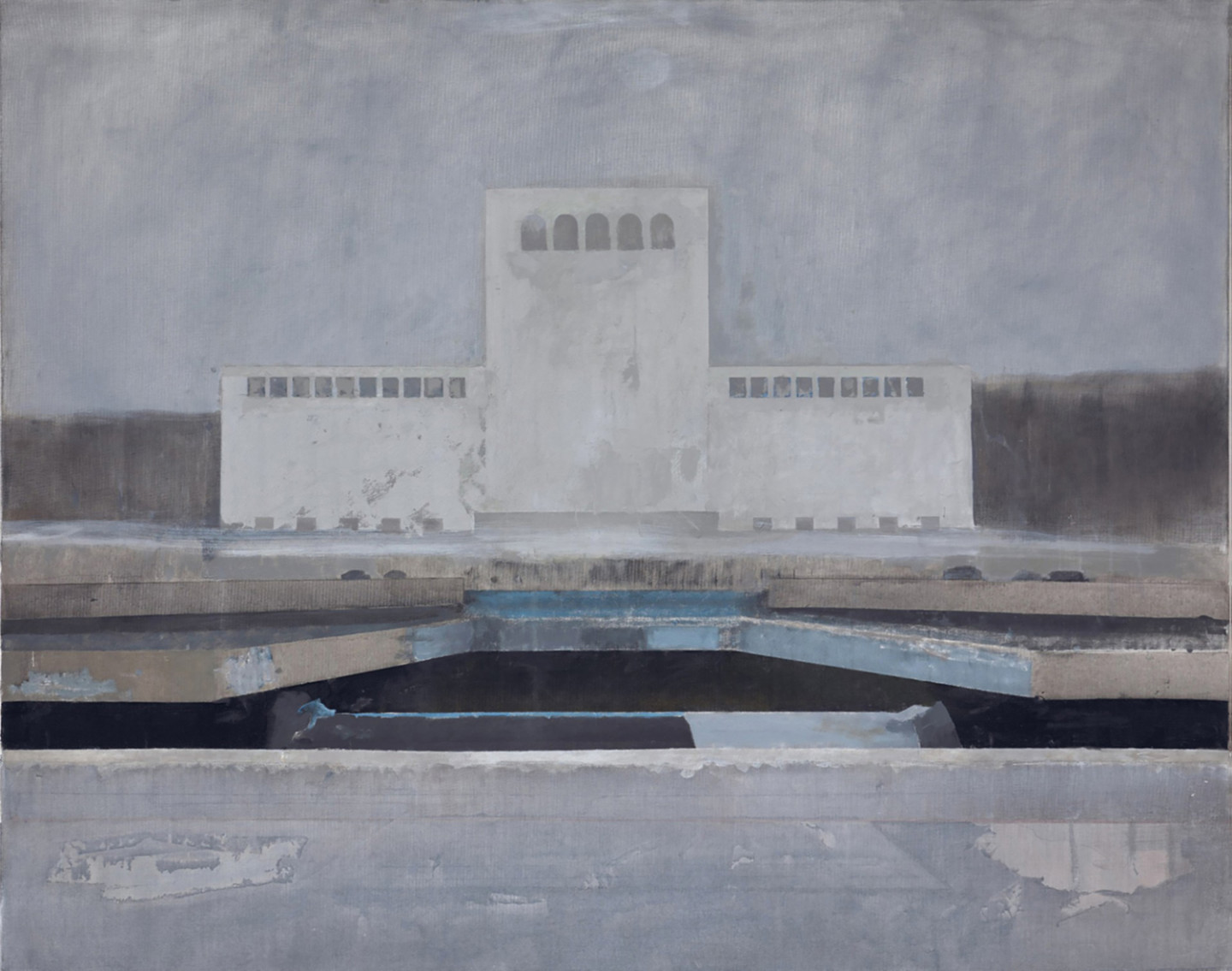
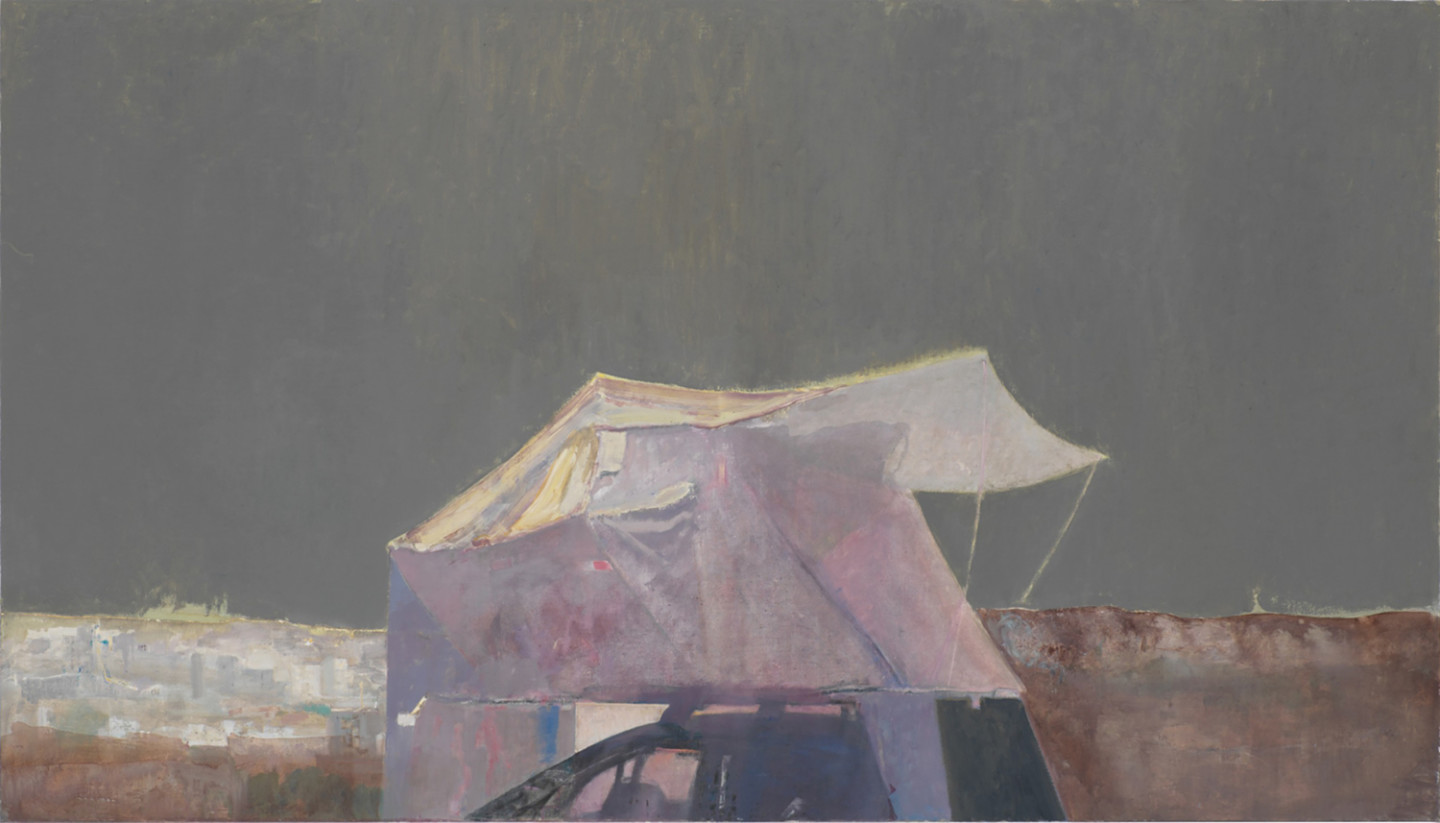
An Uncertain World
From the late 2010s, Edi Hila increasingly turns his gaze beyond Albania towards the wider world. The tent enters his visual language — first as a symbol of longing for freedom, a dwelling that breathes with the landscape.
While preparing for his participation in documenta 14, he travels to Athens in 2015 and witnesses the refugee crisis. The tent assumes a new, more complex meaning: an image of life at the edge, but also of human resilience and the urge to seek out new places in which to put down roots.
A poetic, at times subtly apocalyptic, note recurs in paintings from the pandemic years. Buildings and barriers appear impenetrable, while the studio becomes an inner realm. In the Paris Métro, he captures the city-dweller: surrounded by others, yet profoundly alone.
The House among the Mountains
Edi Hila’s latest paintings are inspired by the small village of Memlisht in southeastern Albania, where he and his wife Joana recently bought a house. Once a mining community, the village is encircled by majestic mountains whose hollowed cavities have led the artist to turn his gaze both inward and downward: inward, toward the chambers of the soul and the landscapes of the subconscious; downward, toward what lies beneath the earth’s surface and deep within the ground.
In his most recent works, as well as in sketches for future paintings, mountain walls open onto abysses. The ground fractures and splits, drifting apart like tectonic plates; the sky seems to have sunk beneath the earth, and steep staircases cut through the terrain. Here, the landscape becomes a mirror of the human interior – a place for introspection and wonder before the sublime power of nature.
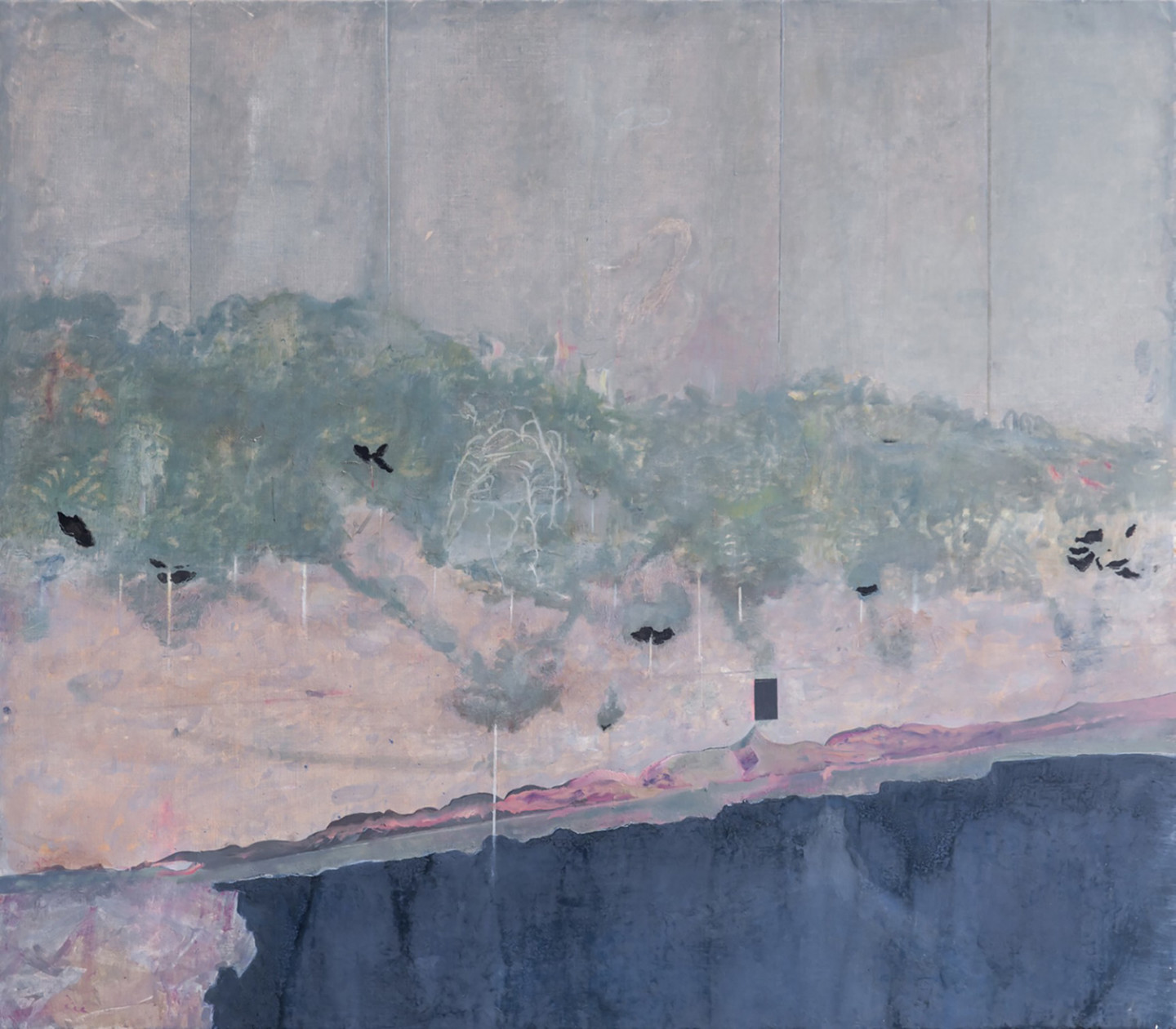
Deeply rooted in physical reality, Edi Hila’s paintings are based on photographic references—snapshots from urban wanderings and journeys through the countryside. Edi Hila:
As Barthes suggests, photography is a reliable yet fleeting source of evidence. For me, it becomes a miniature outline for the painting, where I preserve the initial emotion just before the first shot...
Edi Hila
Edi Hila is widely regarded as one of Albania’s most significant artists – a painter who has captured his country’s dramatic social …
Fractured Horizons
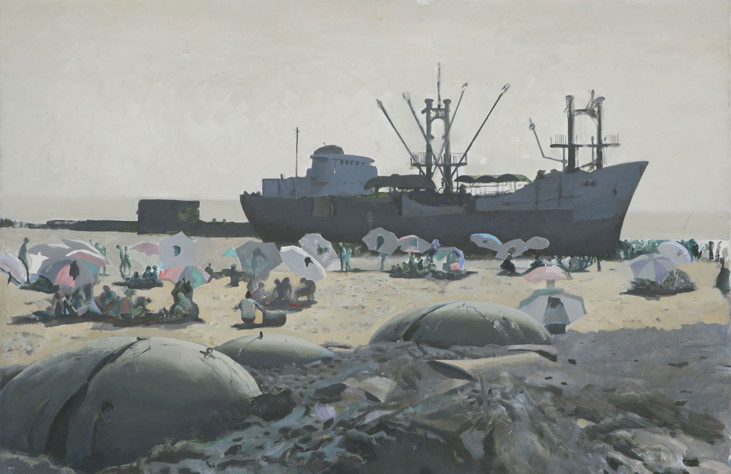
Book a guided tour
Book a guided tour for your students, friends, colleagues or club. Experience an inspiring and dynamic environment, discover new perspectives and new …
Book a guided tour
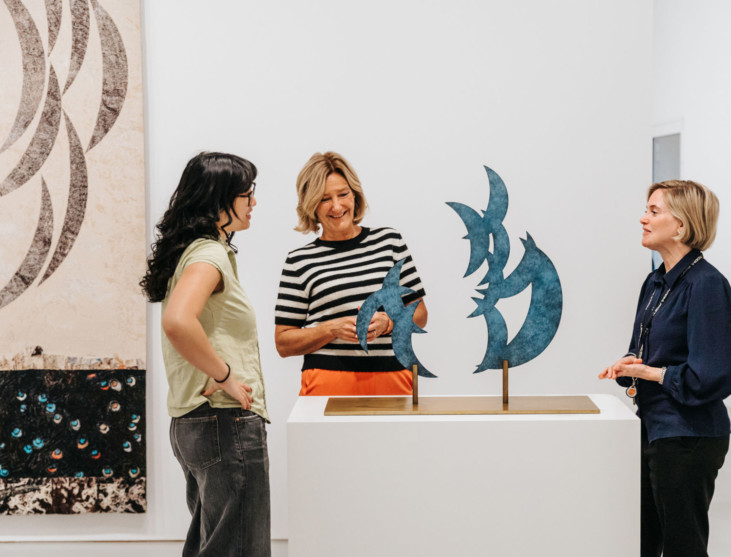
Kafé Sisko
To have a snack and eat and drink something delicious in connection with the museum visit is unbeatable! Sit down in our café, Kafé Sisko, to …
Kafé Sisko
